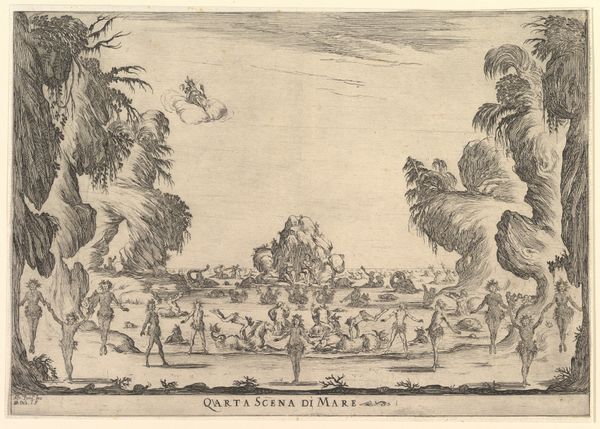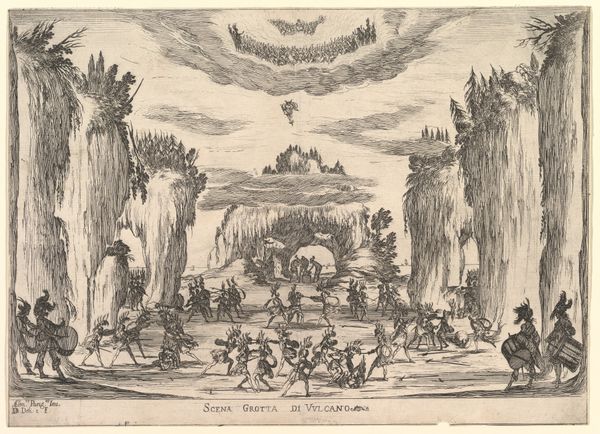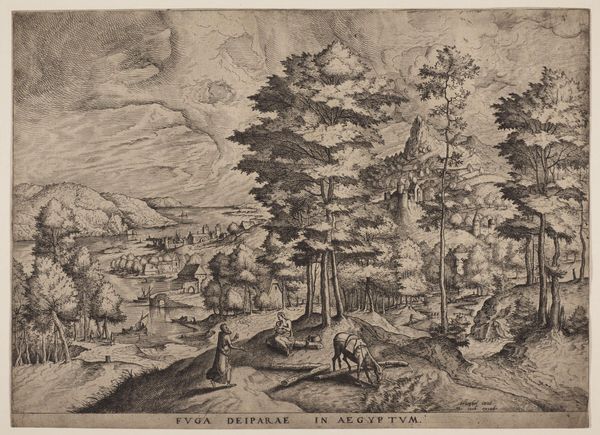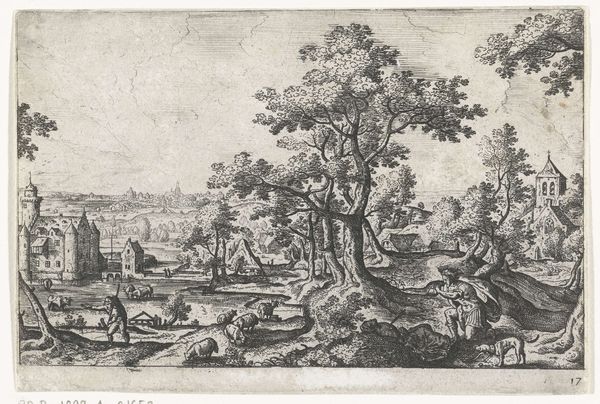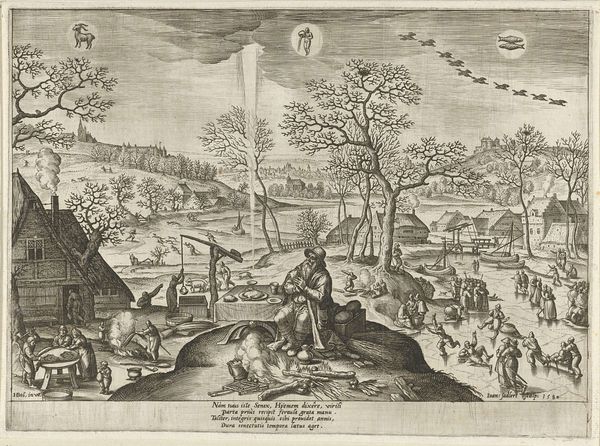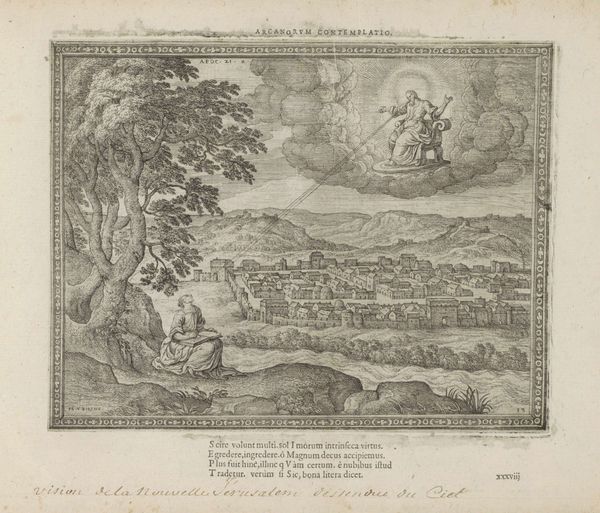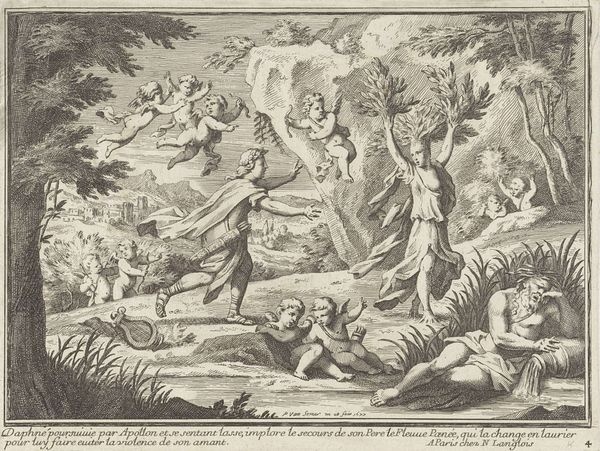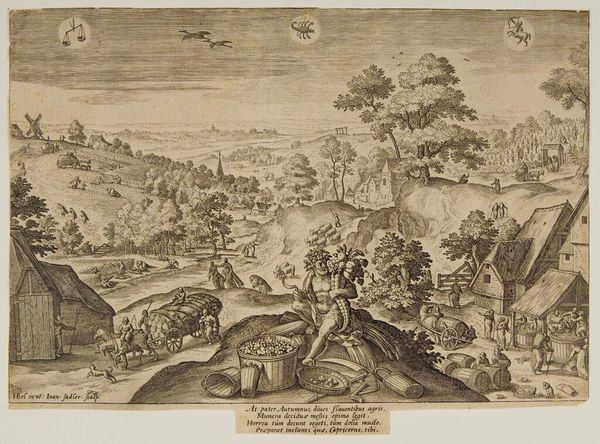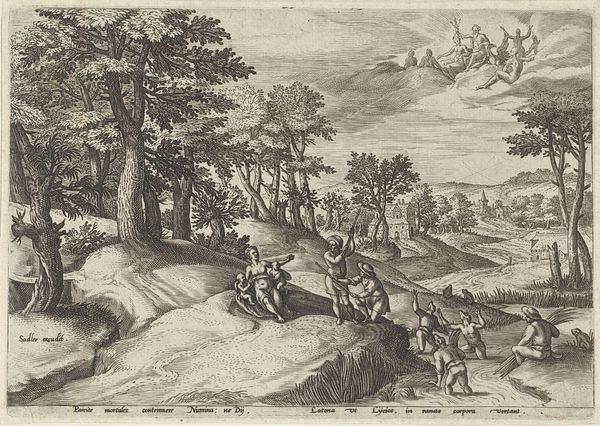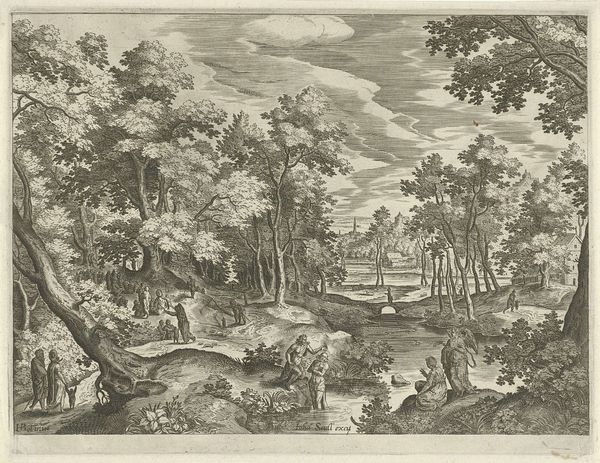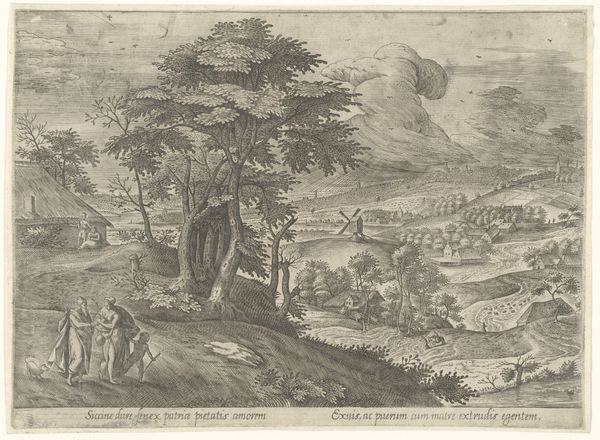
First scene, in Florence, from 'The marriage of the gods' (Le nozze degli Dei) 1637
0:00
0:00
drawing, print, etching
#
drawing
#
baroque
# print
#
etching
#
landscape
#
history-painting
Dimensions: Sheet: 8 7/16 x 7 3/8 in. (21.5 x 18.7 cm)
Copyright: Public Domain
Editor: This etching, "First Scene, in Florence, from 'The Marriage of the Gods,'" created by Stefano della Bella in 1637, depicts what appears to be a theatrical performance against the backdrop of the city. The composition feels almost dreamlike. I am fascinated by the floating figures above the city skyline. What kind of cultural memories were these images intended to evoke? Curator: The symbols at play here! The elevated deities—they instantly connect us to established cultural narratives, Roman mythology made contemporary within a baroque lens. It is a strategic use of culturally pervasive imagery, but can you consider how landscape contributes? The ordered stage meets nature… Do you think this might highlight how both inform each other? Editor: I see what you mean. The positioning does suggest a harmonious coexistence or negotiation between human creation – the stage, the city, the performance – and the natural world. It makes me wonder if these were politically loaded symbols at the time. Curator: Certainly. Public spectacles such as this, full of symbolic representation, often reinforced established hierarchies and social order, drawing legitimacy through appeals to classical authority. What impact do you feel seeing this "scene" almost 400 years later? Editor: It makes me realize that these performances, beyond their immediate entertainment value, played a crucial role in shaping and perpetuating cultural values. And the use of such established iconography really speaks to the power of images to communicate complex ideas to a broad audience. Curator: Exactly. By studying such works, we begin to understand how symbols evolve, accumulate meanings, and are repurposed across generations. Now how would the modern viewer interpret this? The artwork itself is an archive of culture, waiting to be read.
Comments
No comments
Be the first to comment and join the conversation on the ultimate creative platform.
